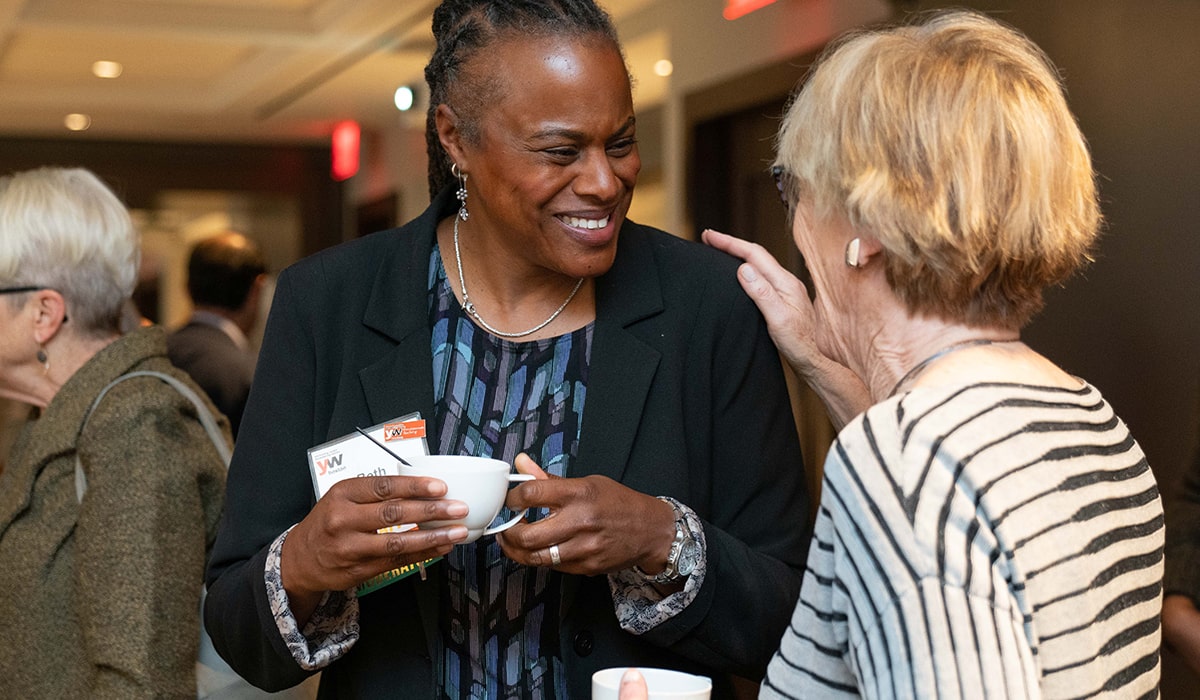By YW Boston

When nonprofits interview a potential employee, they are not just looking at their skills and past experiences. Often, teams look for a sense of how an interviewee would work with existing staff and whether they hold the values of the organization. This evaluation is often branded as a search for a “culture fit” – as in, “Does this person fit into the existing culture of our organization?”
Forbes recommends looking for “culture fit” candidates because, as they explain, “we can always provide the resources and tools to help employees get better at their jobs, but we can’t teach someone to align with our cultural values.” Each organization has their own language, processes, and customs. Many people believe that a new employee who is a “fit” will be easily onboarded into this culture, leading to increased employee satisfaction and reduced employee turnover.
“Culture Fit” is flawed
A number of sources that speak of “culture fit,” such as Forbes and Business News Daily, recognize that the concept can be harmful if employed incorrectly. As Forbes explains, “What it doesn’t mean is overlooking different cultures and lifestyles, or dismissing personal values you don’t agree with.” However, when a hiring team becomes very focused on cultural fit, they will be more likely to hire those who are familiar to them. Even if unconsciously, hiring teams make judgements based on who they believe would be the easiest to train or get to know, often choosing those similar to them.
“Culture Fit” may be hurting your organization
With each individual hire, these trends may not be obvious, but they build over time. This leads to a lack of diversity within an organization, which can stifle its success. As McKinsey & Company reported in Diversity Matters, companies in the top quartile for gender diversity are 21% more likely to outperform those in the bottom quartile. Those in the top quartile for racial diversity are 33% more likely to outperform. Their research demonstrates that hiring bias’s effect on office diversity has large ramifications. A homogenous workplace culture (whether it be homogenous on racial, gender, or experience) can lead to groupthink and the team may have a more difficult time finding solutions.
Instead, focus on “Culture Add”
All of this is not to say that hiring committees should get rid of any attempts to examine how a candidate may work with the organization’s culture. Rather than “culture fit,” consider seeking someone who would be a “culture add” to the workplace. As Beamery explains it, “culture add” requires asking: “What can a candidate bring to the table that will add to your culture and help move it in the right direction?” Focusing on hiring a “culture add” reorients the task by asking your hiring team to perform pre-work that will set you up for success. Before hiring a new candidate, the team should examine: What perspectives are we missing from our work? Where are we looking to grow as an organization? Then, after accepting that employees can and should help your nonprofit’s culture evolve, there must be processes in place to allow this to happen. This means fostering an inclusive workplace where employees are recognized for the unique perspectives and skills they bring to the work.
About YW Boston
As the first YWCA in the nation, YW Boston has been at the forefront of advancing equity for over 150 years. Through our DE&I services—InclusionBoston and LeadBoston—as well as our advocacy work and youth programming, we help individuals and organizations change policies, practices, attitudes, and behaviors with a goal of creating more inclusive environments where women, people of color, and especially women of color can succeed.
